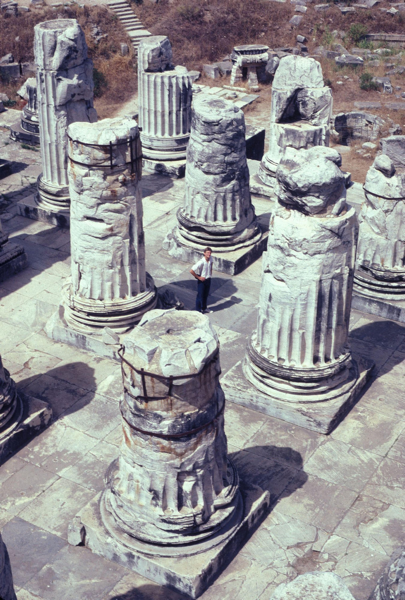
| ||
| Level 100 | ||
|
| ||
| Level 200 | ||
|
| ||
| Level 300 | ||
|
| ||
| Level 400 | ||
|
| ||
| Level 600 | ||
|
| ||
| Level 800 | ||
| ||
| History of Art | ||
| LS&A | ||
| University of Michigan | ||
| Back to the list of courses |
The Built Environment Of Hellenistic Sanctuaries

This seminar will focus on sacred architecture in the Greek world in the last three centuries BC, and on the spatial development of Hellenistic sanctuaries, from the master planning of large building complexes such as the Sanctuary of Asklepios on the island of Kos to the evolution of the practice of erecting private monuments such as honorific statues or exedrae (elaborate park benches) in sacred places. We will also examine the social and political circumstances of sanctuary planning. For example, the sanctuary of the goddess Artemis at Magnesia in Asia Minor was rebuilt in ca. 200 BC in an apparent attempt to promote it as an international pilgrimage center. Inscriptions carved on the walls of the porticos enclosing the adjacent agora (civic and commercial square) document an extensive campaign to advertise the sanctuary to neighboring cities and kingdoms; a leading architect, Hermogenes, was hired to design a large temple of Artemis; at the same time, a much smaller but very elaborate temple dedicated to Zeus was erected in the agora. In discussing Hellenistic Magnesia, we will consider the importance of sanctuaries to the civic ideologies of Greek cities, the widespread influence of the colossal temple of Artemis, which was much admired by later architects such as Vitruvius; and the contrasting popularity in this period of small "gemlike" buildings like the temple of Zeus. The seminar will consider other sites in Asia Minor, including Pergamon (focusing in particular on the combination of sculptural and architectural embellishment of the sanctuary of Athena and the so-called "Great Altar"), as well as in mainland Greece (of great interest is the later development of ancient sanctuaries such the Athenian acropolis and the sanctuary of Zeus at Olympia), and it will compare Hellenistic Greek sanctuaries with the development of sacred spaces in central Italy, especially the sanctuary of Fortuna at Praeneste.